If you’re planning to paint a wooden surface, such as skirting boards or doors, then you should really use a primer before applying your chosen top coat of gloss or eggshell to ensure a professional-looking finish.
Wood primers block any unwanted stains present on the wood, prevent bleed-through from knots and will seal the original wood so the paint doesn’t soak in, meaning you’ll use less top coat, which can save you money in the long run. It will also improve the adhesion of the paint on the wood surface, which will extend the life of the paint.
Which is best? Oil or water based...
Primers have a high-solids content that helps fill in the wood grain, creating a smooth surface for the top coat, and they come in either oil-based or water-based formulations.
- Water-based primer is easier to clean up and typically dries faster than an oil-based primer and can usually be recoated sooner. The oil in oil-based primer seals the grain of the wood and prevents the paint from bubbling due to water damage. However, they release a higher number of VOCs and take longer to dry.
- But, if you have a nasty smoke stain that you’d like to cover, an oil-based primer is ideal. If you want to complete a decorating project in a weekend, then quick drying water-based primers are the best choice for the job, but if you’re decorating a high-traffic areas, then an oil-based formulation will give your tougher, longer-lasting results.
How we tested wood primer paint
We tested five different wood primers and considered everything from the odour to the VOCs in the paint, the coverage, the ease of application and durability, as well as if they lived up to the claims on the can. We also considered if the product represented value for money.
Tried and tested | The best primer to use on wood
- Best oil-based | Leyland Trade white wood primer. Buy now from Amazon (£6 for 750ml)
- Best overall | GoodHome wood white primer and undercoat. Buy now from B&Q, (£14 for 750ml)
- Best budget buy | Wickes water-based undercoat in white. Buy now from Wickes (£13 for 750ml)
- Best water-based | GoodHome wood white primer and undercoat. Buy now from B&Q, (£14 for 750ml)
The best wood primers for 2023
GoodHome wood primer and undercoat in White
Score 9.5/10

Pros
- Suitable for both wood and metal
- Suitable for use indoors and outdoors
- Low VOCs
- Water-based, so easy to clean
Cons
- Definitely needed two coats for good coverage
Water-based, suitable for interior and exterior use, suitable for use on wood and metal and low VOCs
This water-based primer is not only suitable for both interior and exterior use, but it can also be used with both water-based and solvent-based paints. As well and priming wood surfaces, it can be used on metal too. It blocks wood tannins to prevent stain bleed-through and can be used with exotic woods, such as teak.
The primer maintains a breathable, flexible surface area which will help improve the appearance of the top coat.
Is this wood primer as good as it claims?
This primer had a smooth, creamy consistency, similar to emulsion paint, which means it glides on easily when applied with a brush. Its low VOCs meant it hardly had any smell, which is ideal if you’re working in an enclosed space or are sensitive to strong odours. It dried in just four hours, with two hours recommended between coats. After a couple of coats it gave a good, even coverage of the surface with a fairly smooth, matt finish.
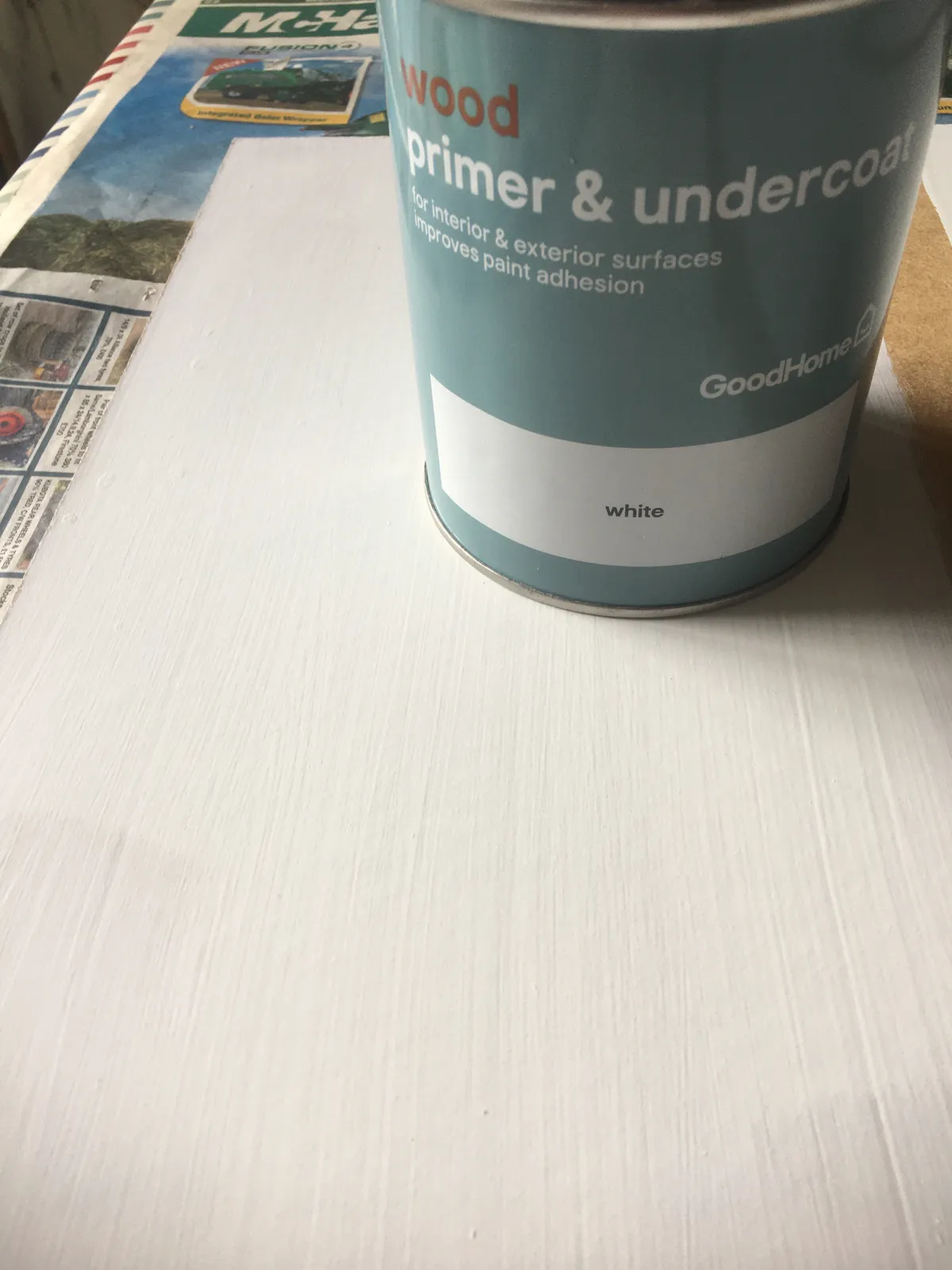
The water-based formulation meant it was easy to clean up the paintbrush after use with just warm soapy water. After leaving the second coat to dry for the recommended four hours, we tested the primer by applying both a water-based and an oil-based top coat, both of which adhered well to the primed surface.
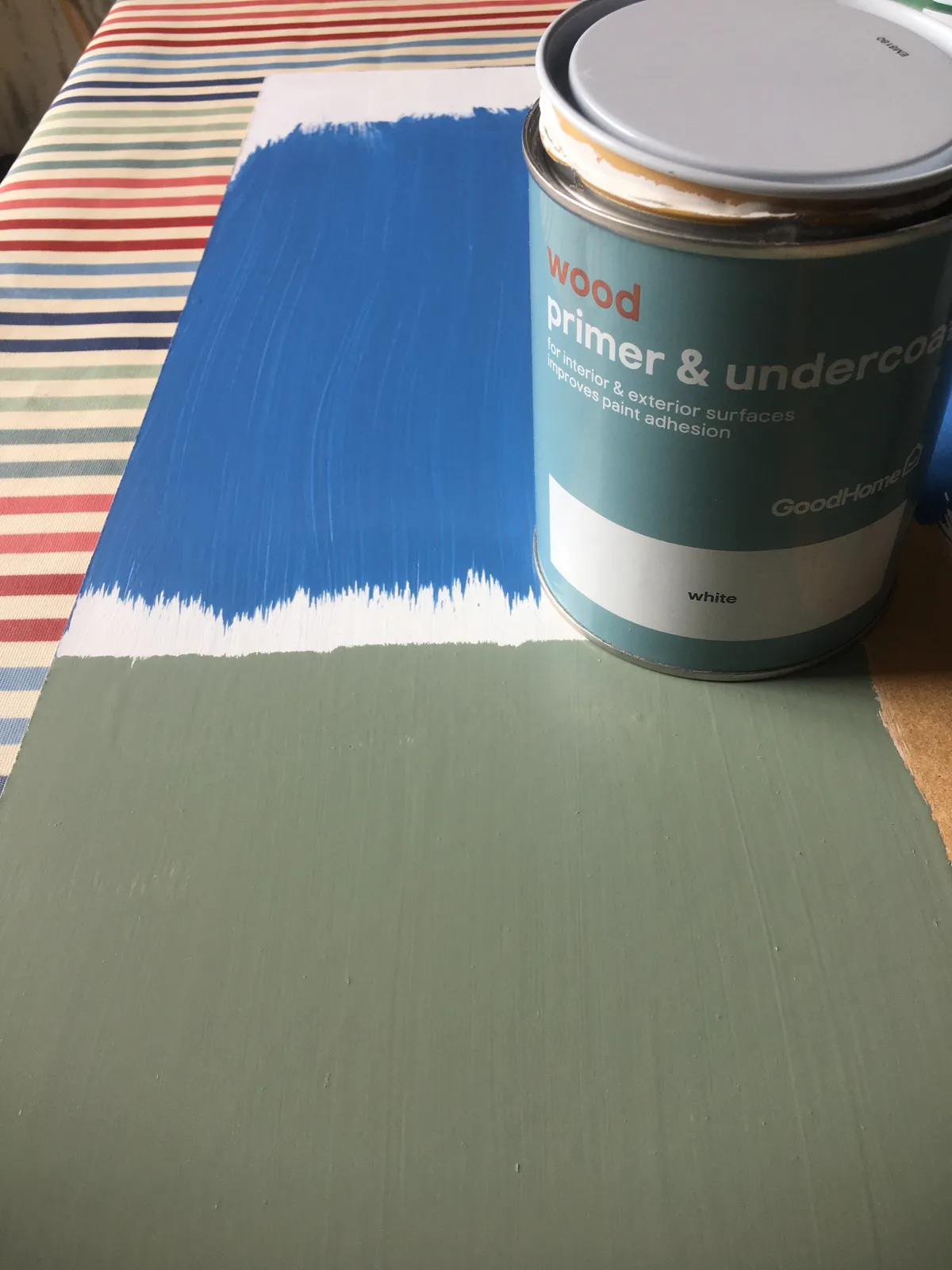
Is this wood primer good value for money
At £14 for 750ml, we felt this offered very good value for money, especially as it can be used on both wood and metal surfaces.
Wickes water-based undercoat in White
Score 8/10

Pros
- Suitable for both wood and metal
- Low VOCs
- Water-based, so easy to clean
Cons
- Only suitable for indoor surfaces
Water-based, suitable for interior use, filling and levelling properties, suitable for use on wood and metal, minimal VOCs and low odour
This water-based primer is suitable for interior use on both wood and metal surfaces. It’s low in VOCs and had a minimal odour. It boasts filling and levelling properties to ensure a smooth, even surface. A 750ml can was enough to cover an area 9m2.
Is this wood primer as good as it claims?
The consistency of this primer was quite thin, compared to the other primers we tested. However, it went on smoothly and easily using a paintbrush. It dried in four hours, but was touch dry in just over an hour. We applied a second coat leaving the recommended four hours between coats. When dry, the finish was smooth, even and matt.
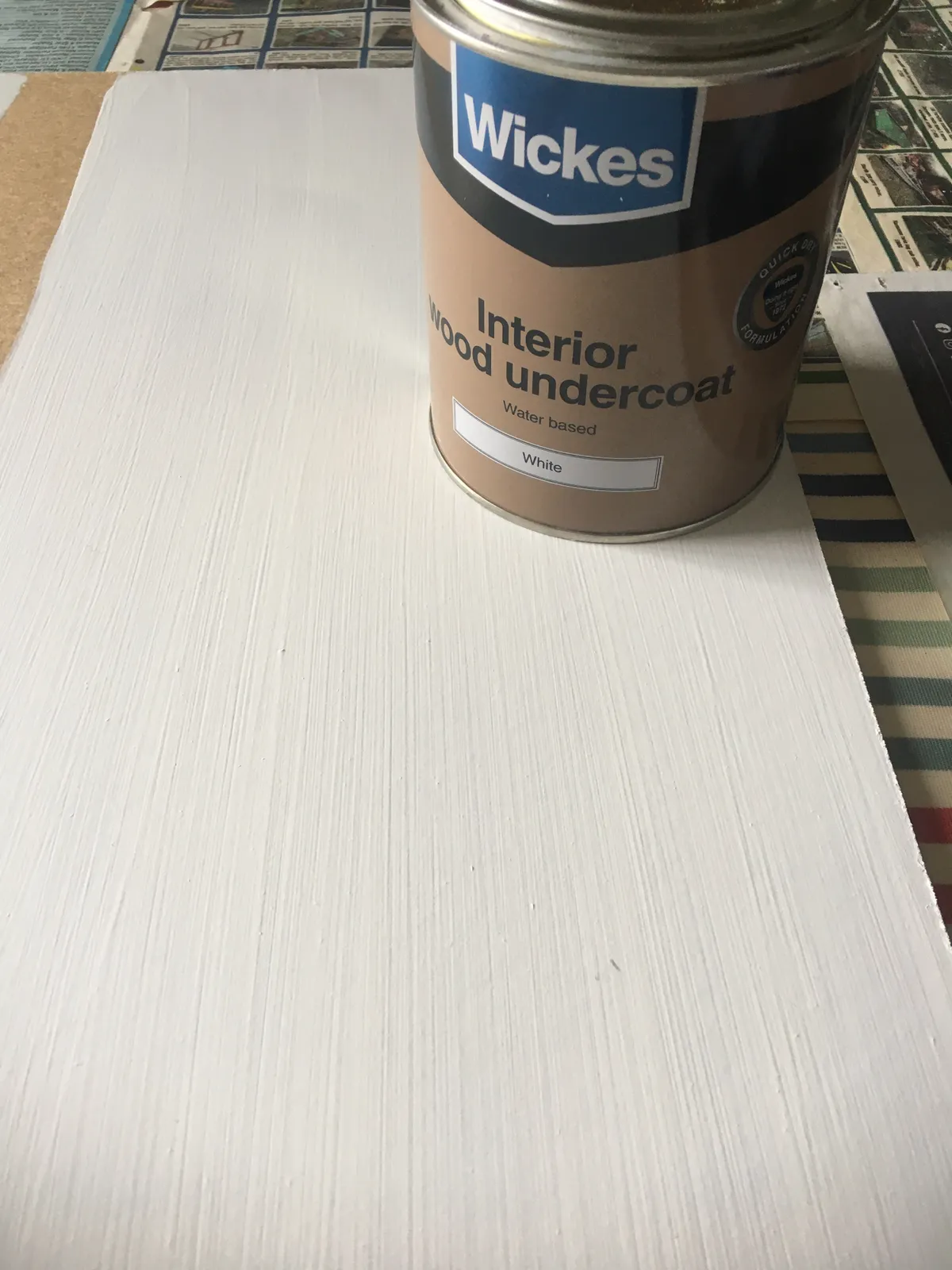
This primer’s water-based formulation meant it was easy to clean our paintbrush after use, using warm soapy water. Once the second coat was thoroughly dry, we tested the primer by applying both a water-based and an oil-based top coat, both of which adhered well to the primed surface.
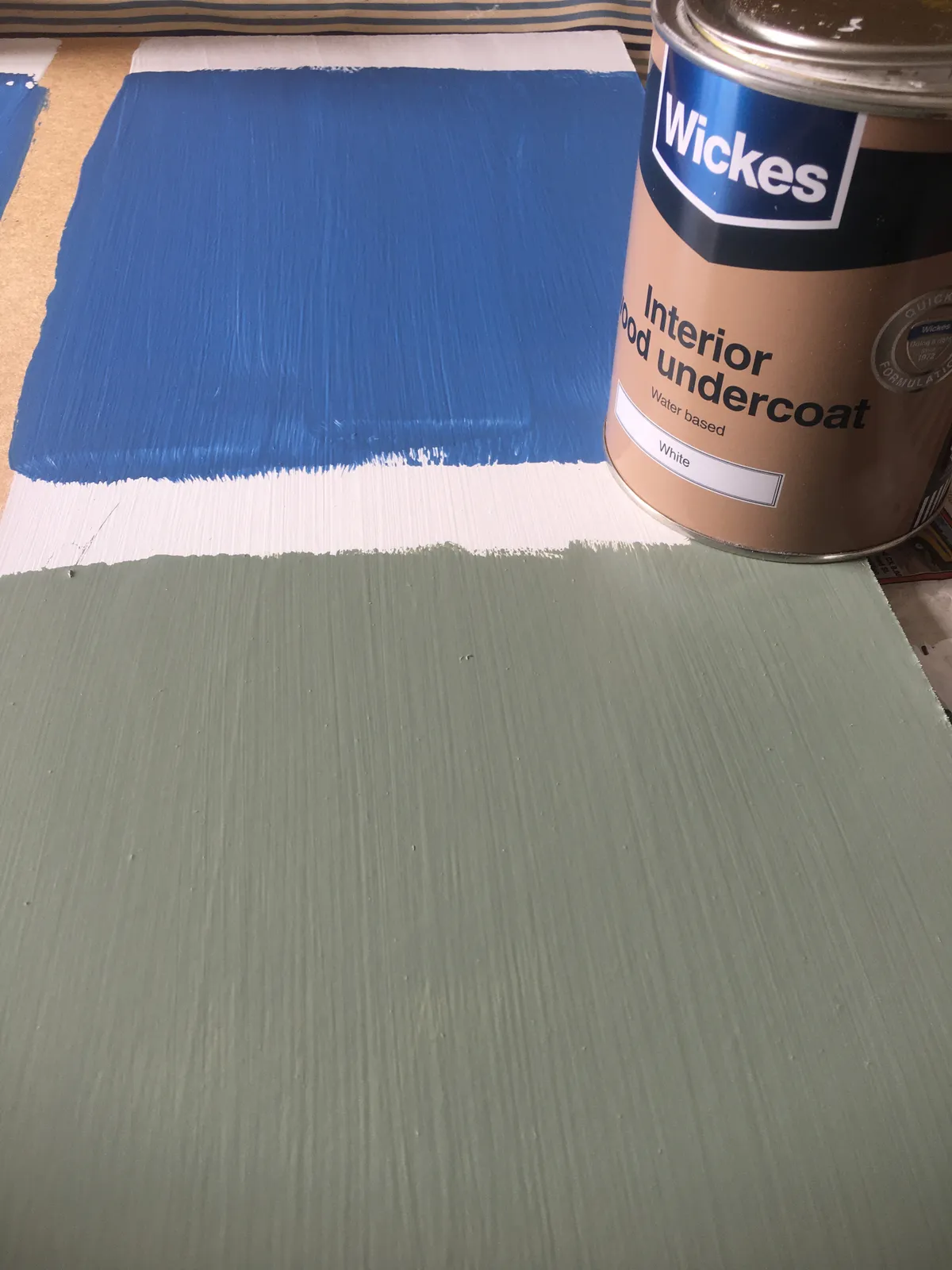
Is this wood primer good value for money
At just £13 for 750ml, we felt that this primer was good value for money. Despite our initial misgivings about its thinner consistency, it provided a level, smooth base for both oil- and water-based top coats.
Crown wood & MDF primer and undercoat in White
Score 8/10

Pros
- Fast drying time of one hour
- Low VOCs
- Water-based, so easy to clean
- Vegan verified
Cons
- Price
Water-based, suitable for interior and exterior use, suitable for use on wood, MDF, hardboard, chipboard and plywood, minimal VOCs and vegan verified
This water-based primer can be used on both interior and exterior projects. As well and priming wood surfaces, it can also be used on MDF, chipboard, plywood and hardboard too. In boasts minimal VOCs and has also been vegan verified. A 750ml can was enough to cover an area 9m2.
Is this wood primer as good as it claims?
This primer has a smooth, creamy consistency and glides on smoothly using a brush. Its low VOCs meant it didn’t really have any smell, which is perfect if you’re working in an enclosed area. The primer was touch dry in just one hour, and four hours drying time is recommended between coats. After two coats it gave a good, even coverage of the surface with a smooth, matt finish.

The water-based formulation meant it was very easy to clean our paintbrush after use, using just warm soapy water. After leaving the second coat to dry for the recommenced four hours, we tested the primer by applying both a water-based and an oil-based top coat, both of which adhered well to the primed surface.
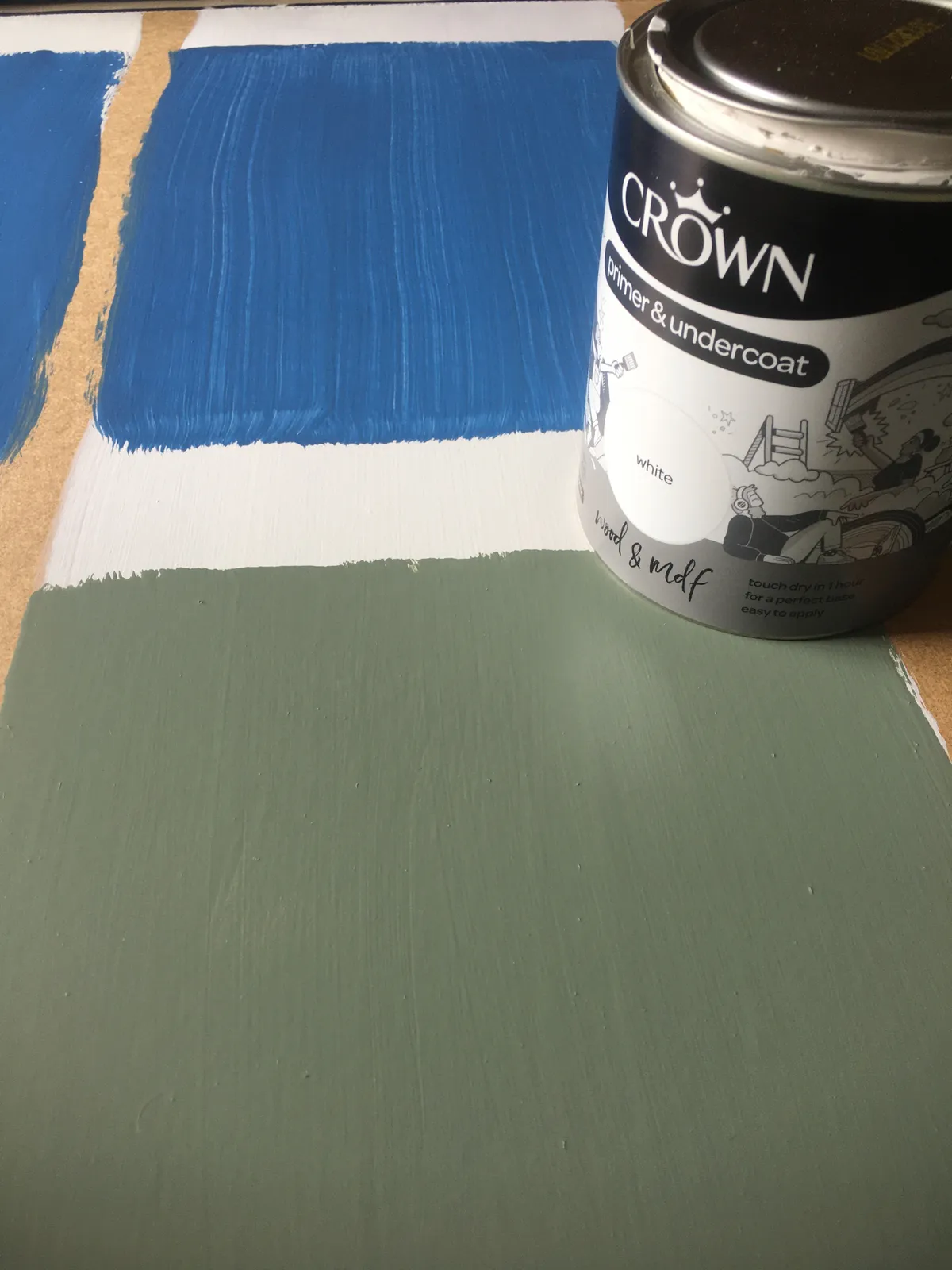
Is this wood primer good value for money
This product performed well and the fact it could be used on a wide range of substrates meant it offered good value for money.
Leyland Trade wood primer in White
Score 6/10
- Buy now from Amazon (£6 for 750ml)

Pros
- Good coverage
- Smooths uneven surfaces
Cons
- Slow drying times
- High VOCs
- Messy to clean up
- Viscous consistency
Oil-based, suitable for interior and exterior use, suitable for use on wood, high VOCs and smooths uneven surfaces
The oil-based formulation of this primer is high in VOCs and had a distinct solvent aroma. It can be used on both internal and external surfaces, but if using it indoors, you’d want to make sure the space is well-ventilated. It has the added bonus of levelling out uneven surfaces, but it is only recommended for use on wood, not any other surface. A 750ml can was enough to cover an area 9m2.
Is this wood primer as good as it claims?
This primer had a thick, viscous consistency making it drag as we applied it to the surface, in a similar way that gloss paint behaves. One of the downsides of this oil-based formulation is its long drying time. It takes 16-24 hours to dry and needs to be left for 16-24 hours between coats, so it’s not ideal for quick projects. After two coats it gave a smooth and even surface with a slight sheen. But as it’s oil-based, we needed to use a brush-cleaning fluid to clean up, rather than water, which adds another cost to the painting project.

After leaving the second coat to dry for the recommenced 24 hours, we tested the primer by applying both a water-based and an oil-based top coat. The oil-based top coat adhered well to the primed surface, however the water-based paint didn’t adhere quite so well, leaving a few small spots where it pulled away from the primer.
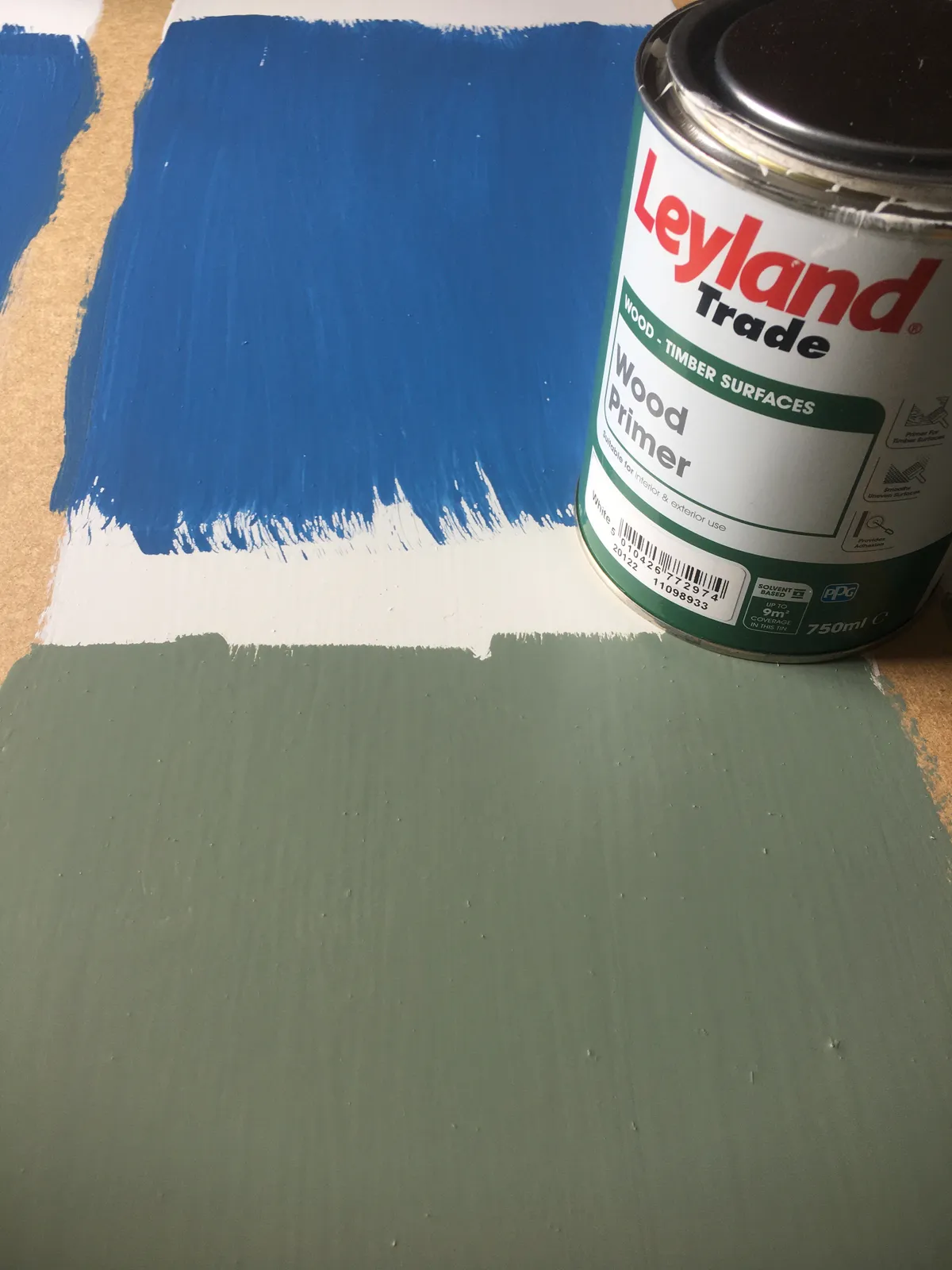
Is this wood primer good value for money
At £15 for 750ml, we felt this offered good value for money if you are planning to use it in conjunction with an oil-based top coat. However, its long drying times means it’s not ideal for quick projects.
Dulux Professional undercoat in Brilliant White
Score 6/10
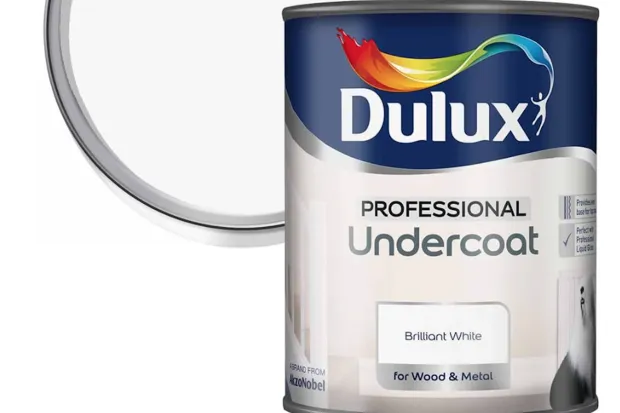
Pros
- Gave a smooth, level finish
- Performed well with an oil-based top coat
Cons
- High VOCs
- Long drying time
- Messy to clean up
- Poor results with a water-based top coat
- Price
Solvent-based, suitable for interior and exterior use, suitable for use on wood and metal and high VOCs
This undercoat can be applied on interior or exterior wood and metal surfaces. It boasts superb hiding power, good cling to sharp edges and excellent levelling properties. However, it is high in VOCs, so had a strong solvent odour. A 750ml can was enough to cover an area 12m2.
Is this wood primer as good as it claims?
This primer had a viscous consistency, which made the brush drag as we applied it to the surface, in a similar way that gloss paint behaves. As it’s an oil-based formulation it had a long drying time. It takes 16 hours to dry and needs to be left for 16 hours between coats, so it’s not ideal for quick weekend projects. After two coats it gave a smooth and even surface with a slight sheen to the finish.
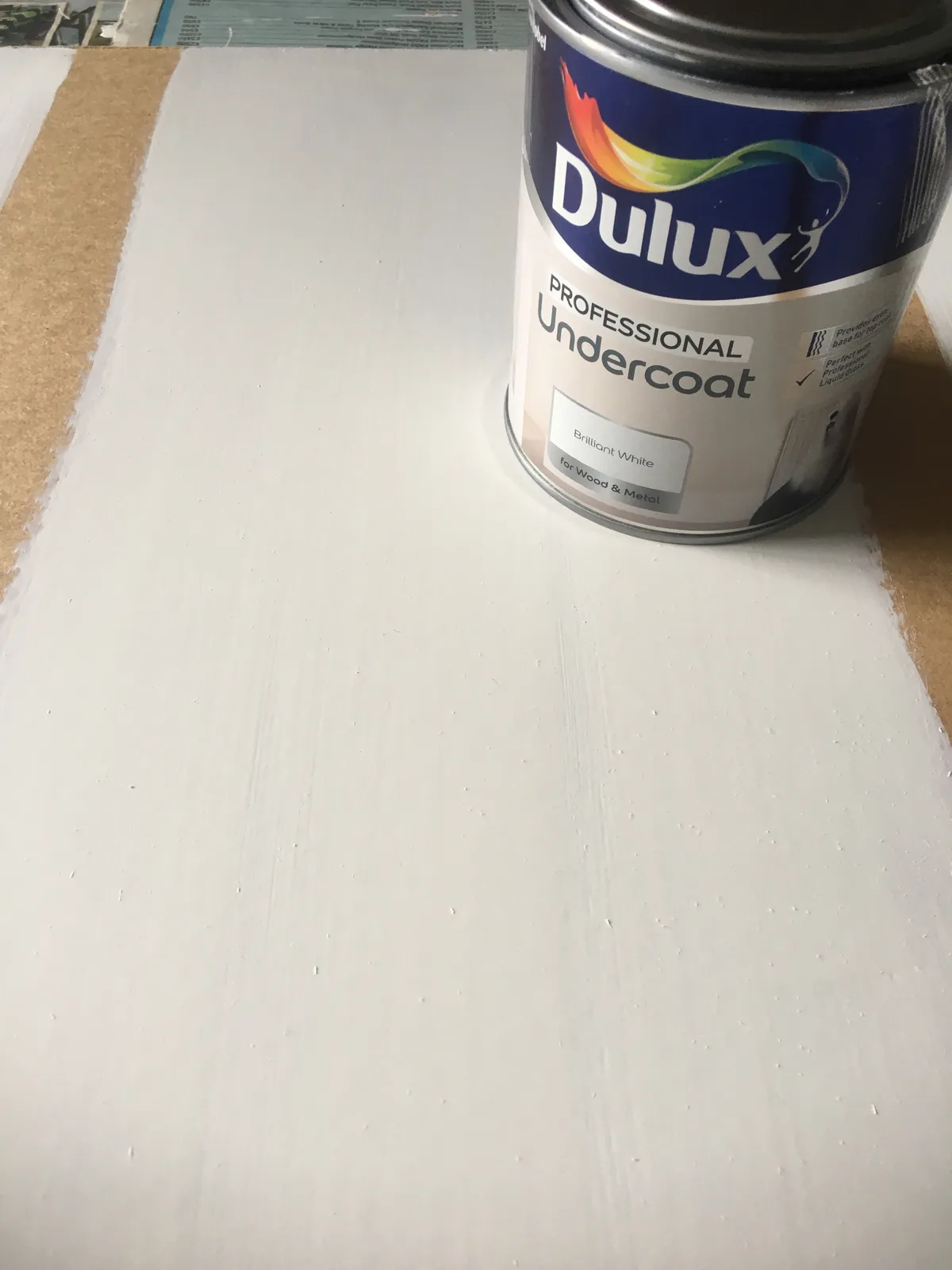
As it’s solvent-based, we needed to use a brush-cleaning fluid to clean up, instead of just soapy water. After leaving the second coat to dry for the recommenced 16 hours, we tested the primer by applying both a water-based and an oil-based top coat. The oil-based top coat adhered well to the primed surface, however the water-based paint didn’t adhere well at all, leaving lots of areas where it pulled away from the primer.
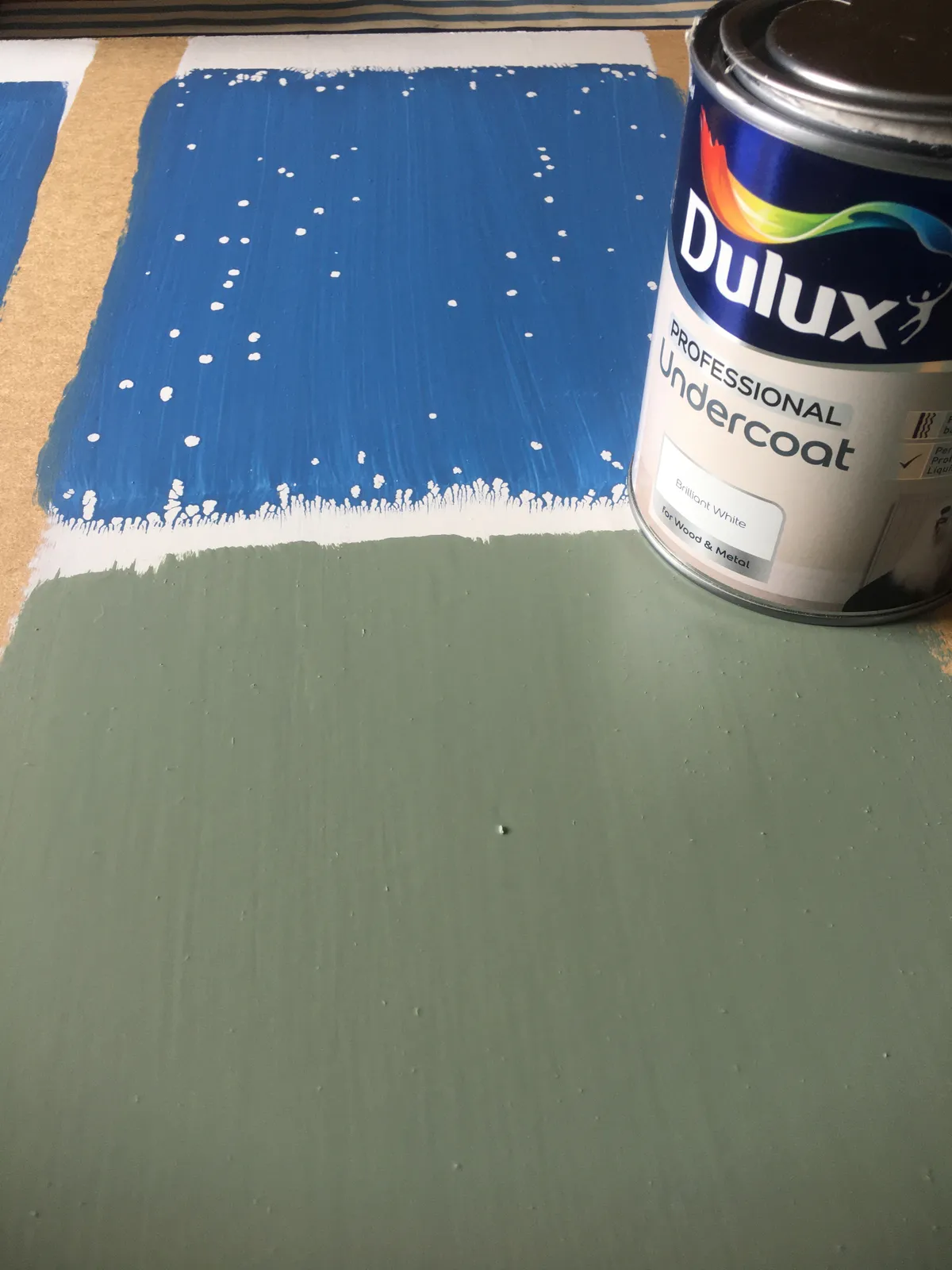
Is this wood primer good value for money
At £18 for 750ml, we felt this offered fair value for money, but only if you are going to use it in conjunction with an oil-based top coat. Due to its long drying time, it’s not the best choice for quick projects.
FAQs
How much primer do you need?
- As a rule of thumb, expect 9m2 coverage per 750ml can.
We've also been busy testing the best paint brushes, best washable paint and best budget white emulsion. We've also put together buyer's guides to find the best anti-mould paint, best exterior wood paint, best paint for kitchen cabinets. For all our paint-related contentlick here.
